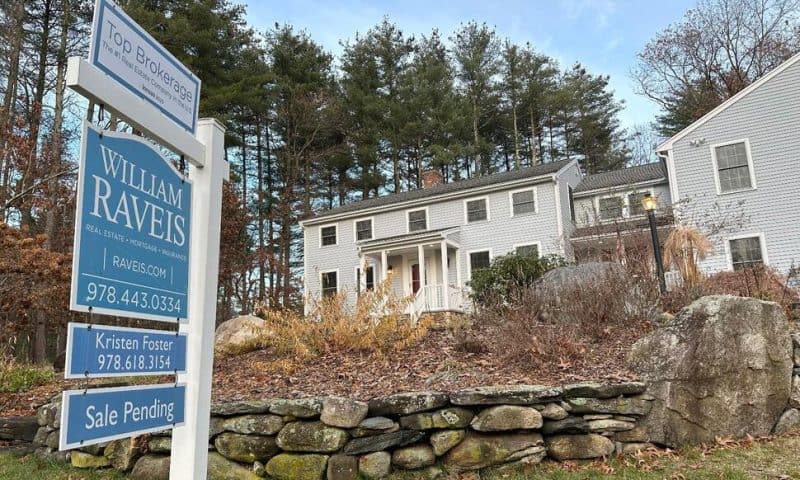The average long-term U.S. mortgage rate edged higher this week, ending a nine-week slide that gave prospective homebuyers some breathing room after home loan borrowing soared to the highest level in more than two decades
LOS ANGELES — The average long-term U.S. mortgage rate edged higher this week, ending a nine-week slide that gave prospective homebuyers some breathing room after home loan borrowing soared to the highest level in more than two decades.
The average rate on a 30-year mortgage inched up to 6.62% from 6.61% last week, mortgage buyer Freddie Mac said Thursday. A year ago, the rate averaged 6.48%.
Borrowing costs on 15-year fixed-rate mortgages, popular with homeowners refinancing their home loans, kept easing this week, bringing the average rate to 5.89% from 5.93% last week. A year ago, it averaged 5.73%, Freddie Mac said.
This week’s slight increase in the average rate on a 30-year home loan follows a sharp pullback in mortgage rates since late October, when its climbed to 7.79%, the highest level since late 2000.
The move mirrored a decline in the 10-year Treasury yield, which lenders use as a guide to pricing loans. The yield, which in mid October surged to its highest level since 2007, has moved lower on expectations that inflation has cooled enough for the Federal Reserve to shift to cutting interest rates after yanking them dramatically higher since early 2022.
The Fed has opted to not move rates at its last three meetings, which has also given financial markets a boost.
“Given the expectation of rate cuts this year from the Federal Reserve, as well as receding inflationary pressures, we expect mortgage rates will continue to drift downward as the year unfolds,” said Sam Khater, Freddie Mac’s chief economist.
Housing economists expect that the average rate on a 30-year mortgage will decline further this year, though forecasts generally see it moving no lower than 6%.
Despite mostly falling since October, the average rate on a 30-year home loan remains sharply higher than just two years ago, when it was 3.22%. That large gap between rates now and then has helped limit the number of previously occupied homes on the market by discouraging homeowners who locked in rock-bottom rates from selling.
“While lower mortgage rates are welcome news, potential homebuyers are still dealing with the dual challenges of low inventory and high home prices that continue to rise,” Khater said.
The sharp runup in mortgage rates over the past two years pushed up borrowing costs on home loans, reducing how much would-be homebuyers can afford even as home prices have kept climbing due to a stubbornly low supply of properties on the market. That’s weighed on sales of previously occupied U.S. homes, which slumped 19.3% through the first 11 months 2023.

